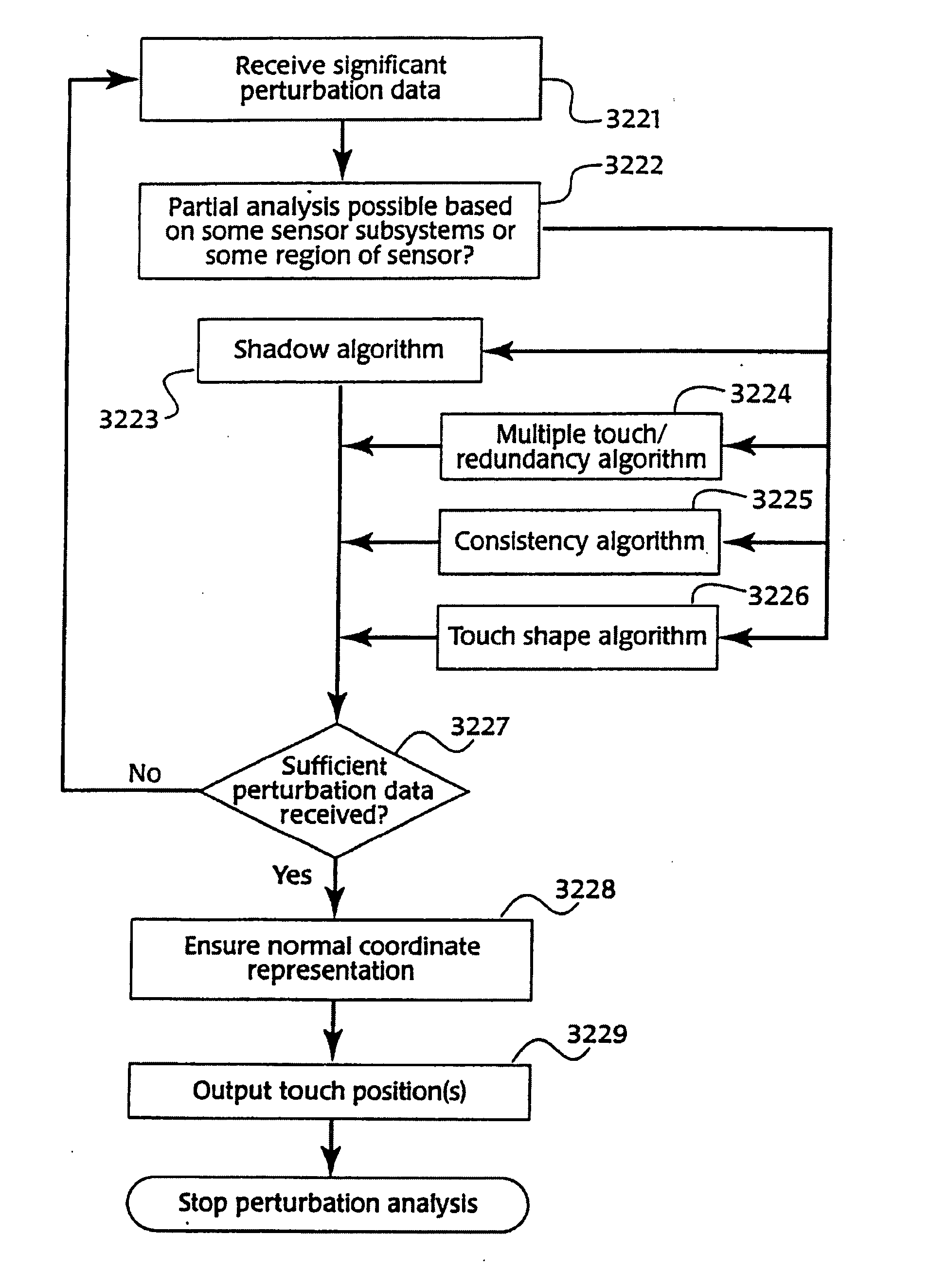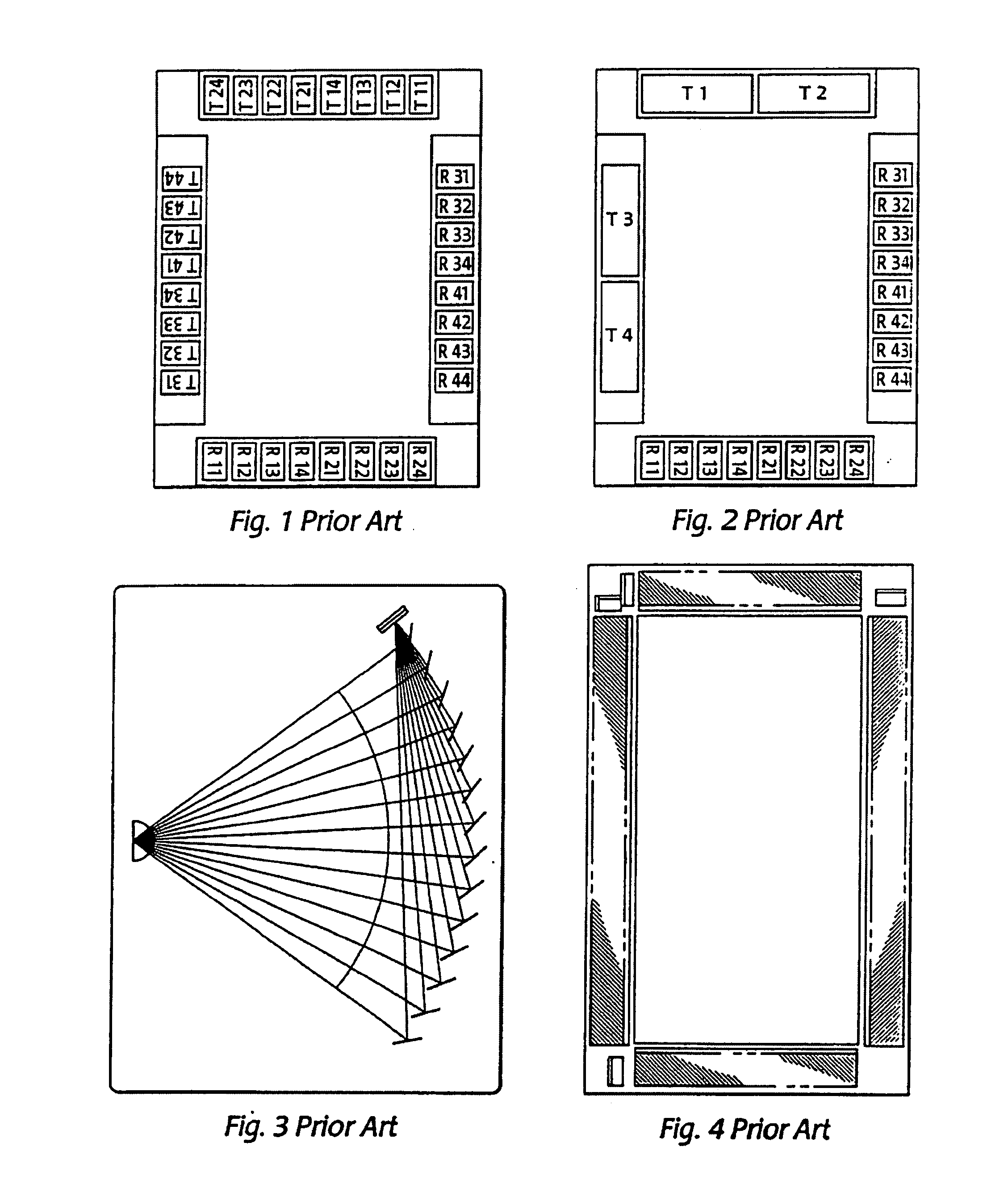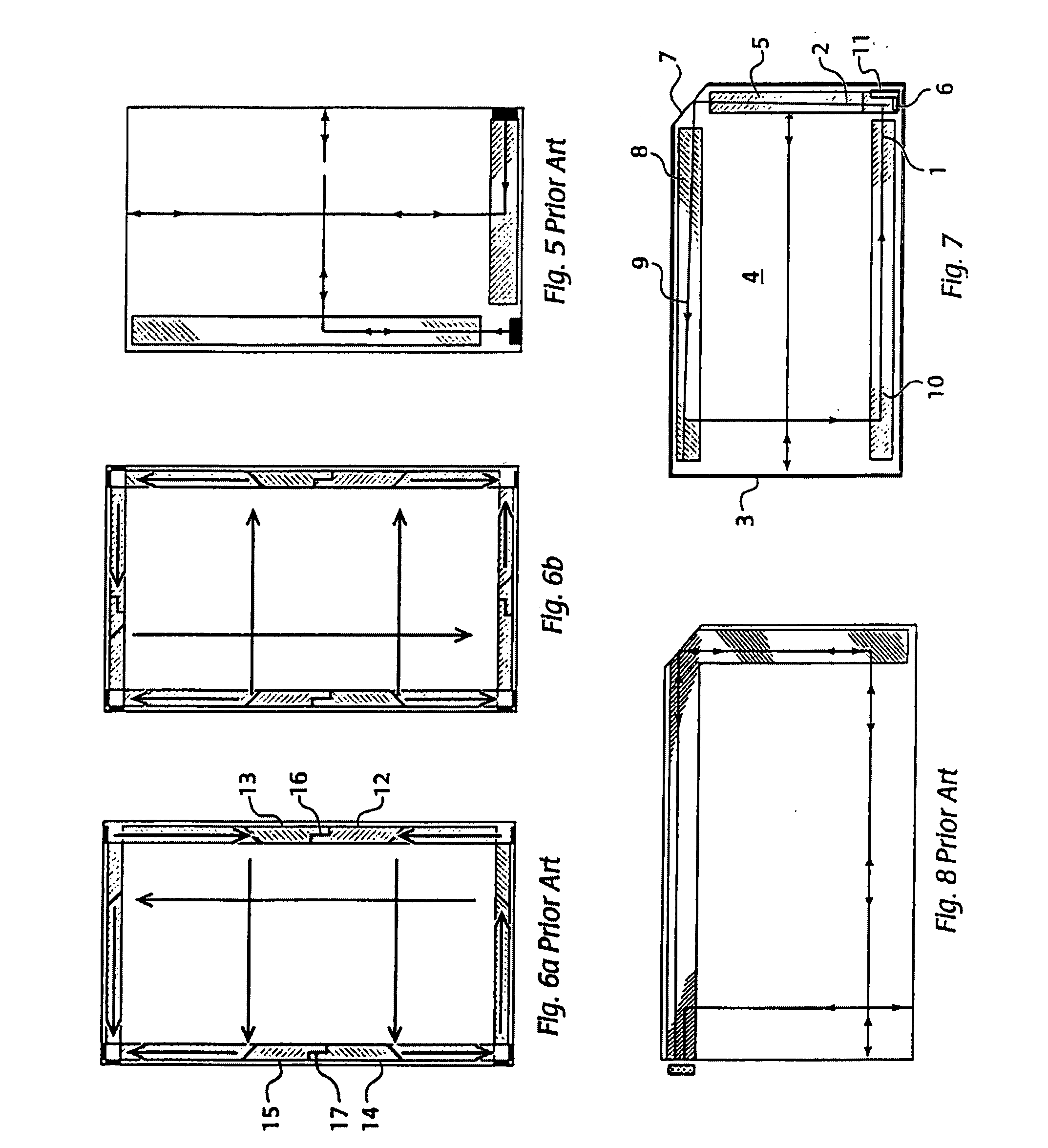Acoustic condition sensor employing a plurality of mutually non-orthogonal waves
a plurality of mutually non-orthogonal waves and condition sensors, applied in the field of acoustic touch position sensors, can solve the problems of large shadowing areas in which two-dimensional touch positions cannot be reconstructed, limiting the versatility of shape and size, and restricting the application of such systems as commonly employed, so as to achieve the effect of reliably reconstructing multiple touches
- Summary
- Abstract
- Description
- Claims
- Application Information
AI Technical Summary
Benefits of technology
Problems solved by technology
Method used
Image
Examples
example 1
[0369]FIG. 10 represents a generic sensor subsystem including transmit and receive transducers and arrays. This generic sensor subsystem includes a family of embodiments which differ in the various parameters.
[0370] Later examples will generalize to families of embodiments in which the acoustic path between the transmit and receive arrays are scattered one or more times by reflective boundaries. Later examples will also generalize to families of embodiments in which the sensor surface has non-planar geometry. In this example, we consider the generic sensor subsystem of FIG. 10.
[0371] In the embodiment of FIG. 10, a set of acoustic paths is associated with a sensor subsystem. Each member of the set of acoustic paths can be represented by a value between zero and one of a path parameter “s”. (In cases where a range other than zero to one is mathematically convenient; this can easily be accommodated with a change of variables.) The acoustic path for a given path parameter starts at t...
example 2
[0381]FIG. 12 illustrates examples of specific touch region geometries within the scope of FIG. 10.
[0382] The rectangular touch region shown in FIG. 12(a) is typical of the X-coordinate sensor subsystems of current flat rectangular acoustic touchscreen products.
[0383] If all segments of the acoustic path in FIG. 12(a) use the same acoustic mode, then the spacing-vector formula leads to the prior art 45° reflectors with wavelength spacing along the array axes. For example, if the incident wave is in the −X direction and the scattered wave is in the Y direction, then the spacing vector is calculated to be S=(nλ / 2,nλ / 2) and hence the reflectors are at 45° the spacing between reflectors in a direction perpendicular to the reflectors is nλ / √2 and the reflector spacing in along the array axis nλ.
[0384] If, instead, the transmit and receive array modes are zeroth order horizontally polarized shear (ZOHPS) waves and the touch region mode is a Lamb wave, then the spacing vector is calcula...
example 3
[0386]FIG. 13 represents an example sensor design that utilizes four sensor subsystems. This design supports control systems which include anti-shadowing algorithms and algorithms that resolve multi-touch ambiguities. The touch region has a width-to-height aspect ratio of √3:1.
[0387] Two sensor subsystems are rectangular as in FIG. 12(a); see FIG. 13(a). By itself, FIG. 13(a) has much in common with prior art sensors with standard X and Y measurements. FIG. 13(a) shows an X transmit transducer 1301, an X transmit reflective array 1302, with reflective elements at 45°, an X receive reflective array 1303, with reflective elements at 45°, and an X receive transducer 1304. Likewise, a Y transmit transducer 1305, a Y transmit reflective array 1306, with reflective elements at 45°, a Y receive reflective array 1307, with reflective elements at 45°, and a Y receive transducer 1308 is provided along an orthogonal set of axes.
[0388] The other two subsystems provide a measurement of a “U” d...
PUM
 Login to View More
Login to View More Abstract
Description
Claims
Application Information
 Login to View More
Login to View More - R&D
- Intellectual Property
- Life Sciences
- Materials
- Tech Scout
- Unparalleled Data Quality
- Higher Quality Content
- 60% Fewer Hallucinations
Browse by: Latest US Patents, China's latest patents, Technical Efficacy Thesaurus, Application Domain, Technology Topic, Popular Technical Reports.
© 2025 PatSnap. All rights reserved.Legal|Privacy policy|Modern Slavery Act Transparency Statement|Sitemap|About US| Contact US: help@patsnap.com



